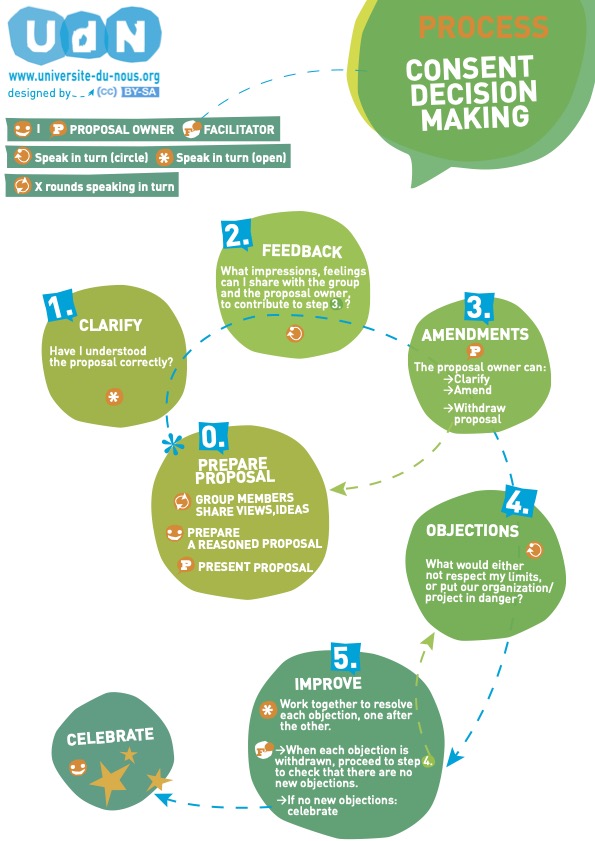Consent-based decision-making
Make shared decisions without falling into the trap of consensus
Consent-based decision-making
Make shared decisions without falling into the trap of consensus
Descended from sociocracy, the consent-based decision-making method is based on the principle that a good decision respects the limits of those who will have to live with its consequences. That means that a decision can only be made if none of these people raise a reasonable objection to it.
This form of decision-making is particularly useful for highly influential proposals, such as a mission statement for a department or division, for example. Dedicating time to this type of project in advance will mean that everyone will be more committed to ensuring it is effectively implemented..
Time needed: 1 hour
Materials:
Consent-based management or decision-making takes place in a talking circle. The aim is to discuss a proposal by addressing all participants’ objections until everyone gives their consent (and “zero-objection” status is achieved).
Below is a video from the Université du Nous, which delves further into the philosophy of consent.
In a consensus-based approach, the decision is made when everyone says “yes”, at the risk of wasting time or creating serious conflicts down the line.
However, with consent-based decision-making however, the decision is made when nobody says “no”. The idea is not to find THE best possible decision, but just a decision that is within the realm of possibility and that does not pose a risk to the group, the project or the individuals.
2. Define a reasonable objection:
On the contrary, an objection is not reasonable if:
The aim is to gather as much information as possible about the problem (facts, preferences, limits, ideas, etc.) before launching into it.
You can either get the participants to work on proposals in sub-groups, or simply ask for suggestions.
If nobody raises their hand, the proposal is adopted. Go straight to the celebration stage (6).
If there are any objections, test them out one by one and then list them on the flip chart (alongside the first names of those who raised them).
Ask questions to identify whether each objection is reasonable: is it concrete, specific and well-reasoned? is it definitely an objection rather than a preference or new proposal?
The objections are either dealt with one by one, or the “proposer” can decide to withdraw their proposal, in which case you then need to go back to step 2.
The objections are dealt with by the group as a whole.
A free discussion is opened and everyone is encouraged to suggest solutions to resolve the objection. Regularly check to see whether the objection has been resolved for the person who raised it.
If a solution succeeds in resolving an objection, the person who raised it must inform the group so that they can move on to the next one.
At the end, go around the group once more to check that all objections have been resolved and that there are no new ones. If there are no objections, you know that you have achieved mutual consent and the proposal can be adopted.
This form of decision-making requires a clearly defined process, represented by the diagram below from the Université du nous.
